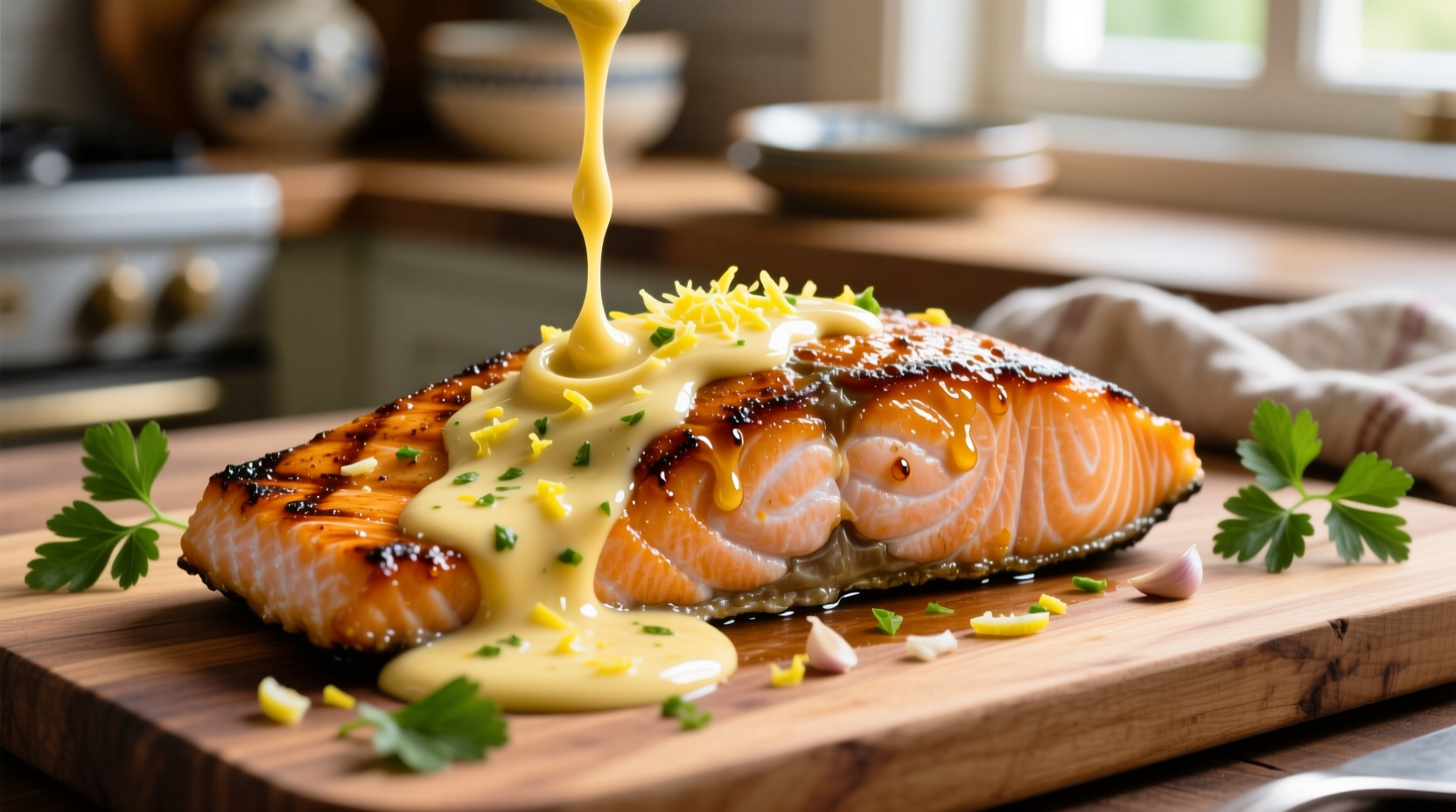Creating the perfect butter lemon garlic sauce requires understanding its delicate balance of rich fat, bright acidity, and pungent aromatics. Unlike traditional emulsified sauces that rely on egg yolks, this simplified version uses the natural emulsifying properties of butter combined with careful temperature control. The ideal ratio maintains 4 parts butter to 1 part lemon juice with garlic added at the right moment to preserve its volatile compounds.
The Essential Recipe Framework
Professional chefs achieve consistent results by following this precise methodology. Start with high-quality unsalted butter (225g/8oz), fresh lemon juice (60ml/¼ cup), and 3-4 garlic cloves minced to a fine paste. The critical technique involves clarifying the butter first to remove milk solids that cause separation, then incorporating lemon juice off direct heat to prevent curdling.
"The key to stability," explains Antonio Rodriguez, "is maintaining the sauce between 60-65°C (140-150°F). Exceeding 70°C (158°F) breaks the emulsion, while temperatures below 55°C (130°F) cause the butter to solidify prematurely." This temperature window allows the lecithin in butter to properly bind with the lemon's citric acid.
| Sauce Component | Traditional Approach | Professional Technique |
|---|---|---|
| Butter Preparation | Melted directly | Clarified to remove milk solids |
| Garlic Addition | Added with butter | Infused in warm (not hot) butter |
| Lemon Incorporation | Mixed at room temperature | Tempered into warm emulsion |
| Stability Duration | 10-15 minutes | 30+ minutes with proper technique |
Perfect Pairing Guidance
This sauce's bright acidity and rich mouthfeel make it exceptionally versatile. Seafood benefits most dramatically - the lemon cuts through fatty fish while butter enhances delicate shellfish. For salmon, apply the sauce during the last two minutes of cooking. With shrimp or scallops, toss cooked proteins in warm sauce just before serving.
Vegetable pairings follow flavor chemistry principles: the sauce complements cruciferous vegetables (asparagus, broccoli) by neutralizing sulfur compounds, while enhancing starchier vegetables (potatoes, artichokes) through fat solubility of flavor compounds. When serving with proteins, consider these optimal combinations:
- Fish: Halibut, cod, and sea bass (sauce applied after cooking)
- Poultry: Chicken breasts, turkey cutlets (sauce used as finishing glaze)
- Vegetables: Asparagus, green beans, roasted cauliflower
- Grains: Quinoa, couscous, or risotto as finishing element

Contextual Application Guidelines
Understanding where this sauce excels - and where it falls short - prevents culinary disappointment. The sauce performs optimally with:
- Freshly prepared dishes served immediately
- Mild-flavored proteins that benefit from enhancement
- Spring and summer menus where bright flavors shine
It's less effective with:
- Strongly flavored meats like lamb or game
- Dishes requiring extended warming periods
- Winter menus where richer, deeper flavors dominate
Food science research from the Culinary Institute of America confirms that butter-based emulsions maintain stability for approximately 30 minutes at proper temperatures before separation begins. For extended service, consider making smaller batches or using a stabilized base like a roux for longer-lasting applications.
Customization Options for Dietary Needs
Modern variations accommodate various dietary requirements without sacrificing flavor integrity. For dairy-free versions, substitute ghee or clarified coconut oil while maintaining the same preparation technique. The USDA FoodData Central database shows that traditional butter lemon garlic sauce contains approximately 100 calories per 30ml (2 tbsp) serving, primarily from fat.
Health-conscious adaptations include:
- Reduced-fat version: Replace 50% butter with vegetable broth
- Extra-virgin olive oil substitution (use 75% oil to 25% butter)
- Adding fresh herbs like parsley or chives for flavor complexity without additional calories
Storage and Reheating Protocol
Proper storage extends usability while maintaining quality. Refrigerate in an airtight container for up to 3 days. When reheating, use a double boiler method to maintain temperature control. The National Center for Home Food Preservation recommends against freezing this sauce due to emulsion breakdown during thawing.
For meal prep applications, prepare the base (clarified butter and lemon mixture) separately from the garlic component. Combine just before serving to preserve optimal flavor profile. This approach maintains freshness while allowing for efficient preparation.











 浙公网安备
33010002000092号
浙公网安备
33010002000092号 浙B2-20120091-4
浙B2-20120091-4